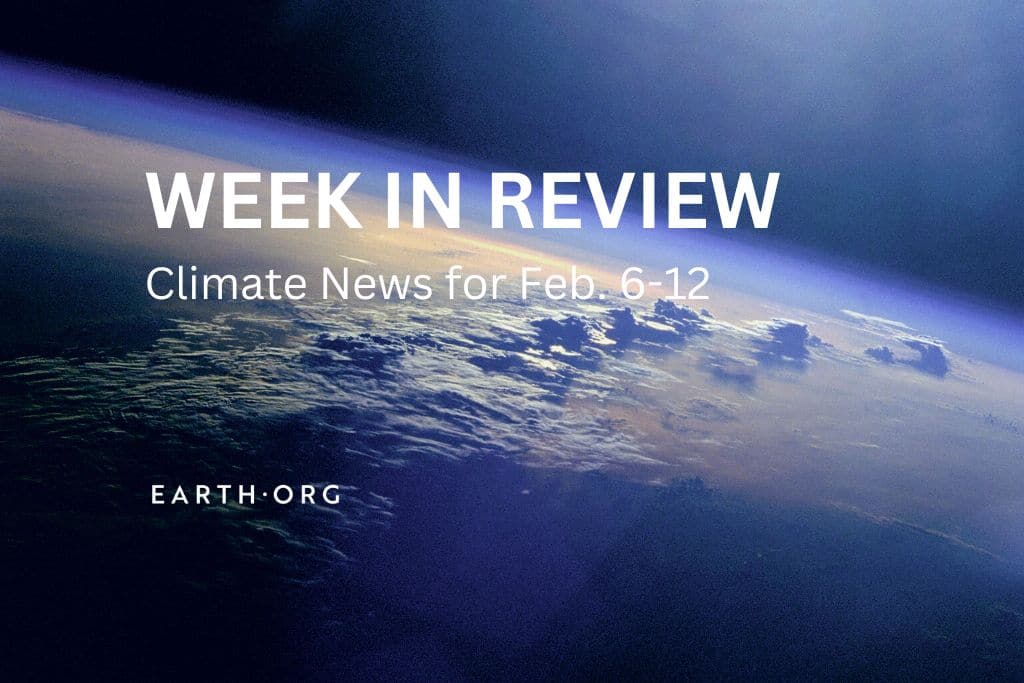This weekly round-up brings you key climate news from the past seven days, including key takeaways from Biden’s State of the Union address, deadly wildfires in Chile, and the IEA’s latest Electricity Market Report.
—
1. Biden Champions Climate Law, Sends Mixed Message on Oil in State of the Union Address
In a 73-minute-long State of the Union address on Tuesday, US President Joe Biden touched on issues ranging from inflation and police reform to immigration and the war in Ukraine. He also talked about climate change, which he described as “an existential threat” to which every state is vulnerable, no matter if “red or blue”, as well as the damages caused by extreme weather events in the US, adding that he is “proud of how America is at last stepping up to the challenge.”
Biden also went off-script and blasted oil companies for their “outrageous” record profits amid a global energy crisis, calling them out for “rewarding their CEOs and shareholders” instead of pumping more crude to “keep gas prices down.”
Read more here.
2. More Vehicles Will Qualify for EV Tax Credit After US Expands SUVs Definition
More crossover SUVs will qualify for the EV tax credit, the Treasury Department announced on Friday following lobbying by automakers. The Biden administration has broadened the definition of sport-utility vehicles, effectively allowing more SUVs to qualify for the $7,500 consumer tax credit. The adjustment is retroactive to January 1, meaning that even those who already bought a vehicle this year can claim the credit.
Automakers including Tesla, GM, and Ford welcomed the government’s decision. John Bonzella, president of Washington-based trade group Alliance for Automotive Innovation, told Bloomberg that the move is a “very good decision that clears up some EV tax credit confusion and instantly helps customers shopping today (and tomorrow) for an electric crossover or SUV.”
Read more here.
3. Renewables Will Dominate World’s Electricity Demand Through 2025, IEA Report Says
The power sector is set for a “tipping point” on its carbon dioxide emissions in 2025, as renewables and other cleaner sources, including nuclear energy, are on track to cover most of the new global electricity demand, a new International Energy Agency (IEA) report published on Wednesday has forecast.
The world’s electricity demand is set to accelerate to an average of 3% over the next three years, with more than 70% of the increase coming from China, India, and Southeast Asia. By 2025, Asia will account for half of the world’s electricity consumption, with one-third being consumed in China. The good news is that both renewable sources and nuclear power are growing quickly enough to cover most of the demand.
Read more here.
4. Unsustainable Water Usage and Climate Change Could Drop Lake Mead Reservoir to ‘Dead Pool’ Levels
Lake Powell and Lake Mead Reservoir, the largest water bodies in the US, are very unlikely to refill in the coming decades amid the worsening of the Colorado river water crisis. The decade-long Western megadrought, the worst in 1,200 years and caused by a combination of natural and anthropogenic activities, has taken a toll on water supplies in the region and is likely to turn Lake Powell and Lake Mead to “dead pool” levels, officials warned at the Colorado River Users Association last December.
This means that water levels could shrink so much that neither reservoir would be able to release water downstream, with consequences beyond water shortage. Indeed, were the lake’s level to drop below 895 feet (273 metres) from the current 1,047 feet (319 metres), it would also jeopardise the Hoover Dam’s ability to provide electricity – leaving nearly 1.3 million people in Arizona, California, and Nevada without power.
Read more here.
5. Deadly Wildfires in Chile Kill At Least 26 People As Challenging Weather Conditions Hamper Rescue Efforts
Record temperatures of more than 40C (104F) are hampering rescuers’ efforts to control the deadly wildfires in Chile, which have so far killed at least 26 people, destroyed 800 homes, and displaced thousands. As of Monday, the devastating fires had consumed 270,000 hectares (667,000 acres), the second-largest area burned after the “fire storm” that hit the South American nation in 2017. According to the state National Forestry Corporation, 275 fires were still active and 69 were currently in combat.
The nation is also battling with a 13-year-long drought that has exacerbated the country’s water supplies. Water availability has dropped down to 10%-37% over the past 30 years, and it is estimated to plummet further in the next few decades as the effects of climate change worsen, with water availability in northern and central Chile expected to be halved by 2060.
Read more here.

















